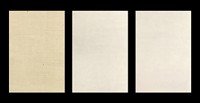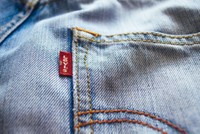Advertisement
Grab your lab coat. Let's get started
Welcome!
Welcome!
Create an account below to get 6 C&EN articles per month, receive newsletters and more - all free.
It seems this is your first time logging in online. Please enter the following information to continue.
As an ACS member you automatically get access to this site. All we need is few more details to create your reading experience.
Not you? Sign in with a different account.
Not you? Sign in with a different account.
ERROR 1
ERROR 1
ERROR 2
ERROR 2
ERROR 2
ERROR 2
ERROR 2
Password and Confirm password must match.
If you have an ACS member number, please enter it here so we can link this account to your membership. (optional)
ERROR 2
ACS values your privacy. By submitting your information, you are gaining access to C&EN and subscribing to our weekly newsletter. We use the information you provide to make your reading experience better, and we will never sell your data to third party members.
Business
Sustainability: Western Dye Makers Tout Environmentally Friendly Products
by Marc S. Reisch
November 15, 2010
| A version of this story appeared in
Volume 88, Issue 46

Governments in the U.S. and Europe have long pressured manufacturers to come up with environmentally safer pigments and dyes. More recently, Asian regulators are raising environmental flags, and retailers are putting the squeeze on colorant makers to meet stringent sustainability standards.
This evolution presents an opportunity for Western dye and pigment manufacturers. Whereas they once complained that their Eastern competitors had an unfair advantage because of lax regulatory standards, Western companies such as Huntsman Corp. say their environmentally friendlier products now give them an advantage. In China and India, “authorities have increasingly enforced” environmental regulations, says Paul Hulme, president of Huntsman’s Textile Effects business.
COVER STORY
Sustainability: Western Dye Makers Tout Environmentally Friendly Products
One advance is new dyes that reduce effluent treatment requirements by using less water. For instance, Huntsman recently introduced Avitera SE, a line of reactive dyes that, when used with a new additive, cuts water consumption and works at lower temperatures compared with standard reactive dyes. Textile mills using the dyes can reduce water and energy usage in half, Hulme notes.
Other dye makers tout similar advances. DyStar says its Remazol Ultra RGB reactive dye system for cotton cuts water consumption by 24% compared with conventional systems and reduces a mill’s effluent treatment load. Clariant notes that a new denim dyeing system it calls Pad/Sizing-Ox uses 92% less water than conventional procedures and creates “practically no wastewater.”
Although improved technology is at their disposal, fabric dyers are slow to change, notes Peter J. Hauser, director of graduate programs at North Carolina State University’s College of Textiles, in Raleigh. Traditional reactive dyes require lots of water and salt, which acts as an electrolyte to force the dye onto cotton fiber. But additives that allow the industry to use less dye and water have been around for some time, he points out.
Hauser says he recently got Dow Chemical interested in developing a cationic additive, Dow CR-2000, as a cotton treatment. The additive is already used in the paper industry to increase paper strength. Treating cotton textiles creates cationic sites that attract dye, doing away with salt and eliminating dye waste because the fiber absorbs all available dye.
Another key to lowering water usage is modern dyeing equipment, says Mary Ankeny, director of dye research at Cotton Inc., a marketing and research agency funded by U.S. cotton growers and cotton garment importers. Twenty years ago, 20 L of water was needed to process 1 kg of fabric in each of up to seven dye baths. That ratio is now 3.5 to 1, she says.
Ankeny adds that she has visited many textile mills in Asia, particularly in China, with up-to-date equipment. Those mills have developed “first class” process controls to satisfy increasingly stringent regulatory requirements. Retailers and apparel makers have also put pressure on mills and dye makers to become more sustainable enterprises, she points out.
Nike, for example, encourages suppliers to use less water and energy, according to John Frazier, the firm’s director of sustainable chemistry. “We train suppliers on chemistry, water, energy, and sustainability,” he says. “And by way of a material and product scoring process—the Considered Index—we enable designers, developers, and suppliers to proactively select materials or processes that we believe are more sustainable.”
Outdoor apparel and equipment retailer Recreation Equipment Inc., better known as REI, says it monitors the product life cycle from cradle to grave. But, says Kevin Hagen, director of corporate social responsibility, REI can’t be an environmental cop. “Our approach is to work with industry partners to create measurement systems.” In the case of textiles, it works with Bluesign, a Swiss textile standards organization, to monitor textile mill sustainability practices.
Bluesign is one of a few organizations—others include the International Oeko-Tex Association and the Institute for Marketecology—that help retailers and contractors enforce Western environmental and sustainability standards on Eastern operations. Peter Waeber, Bluesign’s chief executive officer, explains that his organization conducts regular mill audits. Armed with U.S. and European regulations and its own list of acceptable substances, Bluesign reviews mills anywhere around the globe and recommends “acceptable alternatives” to environmentally undesirable chemicals.
Waeber, a chemical engineer who worked for Ciba and Clariant before starting Bluesign about a decade ago, says his firm’s auditors include chemists and former mill operators who know how the textile industry works. So far, he says, Bluesign has certified over 100 mills.





Join the conversation
Contact the reporter
Submit a Letter to the Editor for publication
Engage with us on Twitter